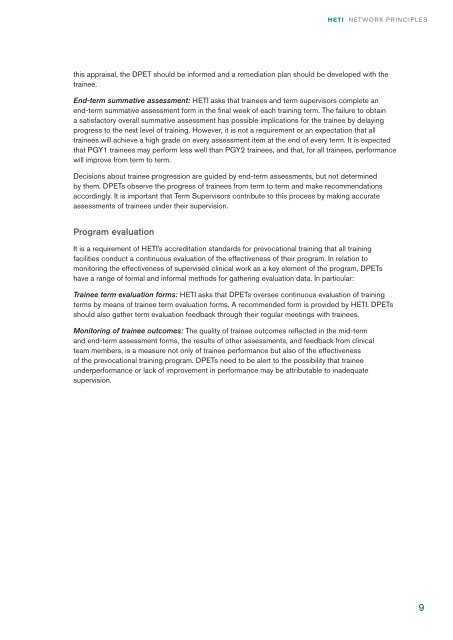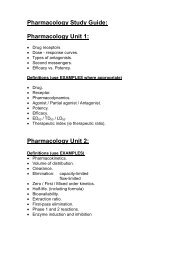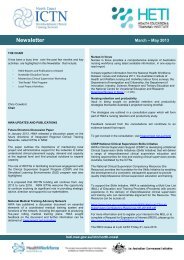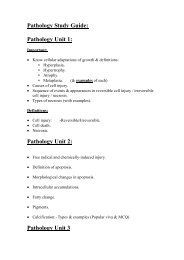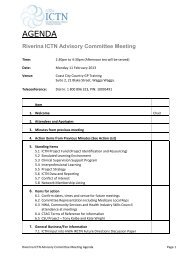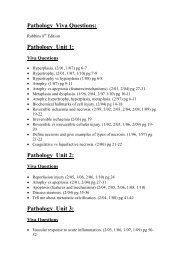Network principles for prevocational medical training - HETI
Network principles for prevocational medical training - HETI
Network principles for prevocational medical training - HETI
Create successful ePaper yourself
Turn your PDF publications into a flip-book with our unique Google optimized e-Paper software.
<strong>HETI</strong> NETWORK PRINCIPLES<br />
this appraisal, the DPET should be in<strong>for</strong>med and a remediation plan should be developed with the<br />
trainee.<br />
End-term summative assessment: <strong>HETI</strong> asks that trainees and term supervisors complete an<br />
end-term summative assessment <strong>for</strong>m in the final week of each <strong>training</strong> term. The failure to obtain<br />
a satisfactory overall summative assessment has possible implications <strong>for</strong> the trainee by delaying<br />
progress to the next level of <strong>training</strong>. However, it is not a requirement or an expectation that all<br />
trainees will achieve a high grade on every assessment item at the end of every term. It is expected<br />
that PGY1 trainees may per<strong>for</strong>m less well than PGY2 trainees, and that, <strong>for</strong> all trainees, per<strong>for</strong>mance<br />
will improve from term to term.<br />
Decisions about trainee progression are guided by end-term assessments, but not determined<br />
by them. DPETs observe the progress of trainees from term to term and make recommendations<br />
accordingly. It is important that Term Supervisors contribute to this process by making accurate<br />
assessments of trainees under their supervision.<br />
Program evaluation<br />
It is a requirement of <strong>HETI</strong>’s accreditation standards <strong>for</strong> <strong>prevocational</strong> <strong>training</strong> that all <strong>training</strong><br />
facilities conduct a continuous evaluation of the effectiveness of their program. In relation to<br />
monitoring the effectiveness of supervised clinical work as a key element of the program, DPETs<br />
have a range of <strong>for</strong>mal and in<strong>for</strong>mal methods <strong>for</strong> gathering evaluation data. In particular:<br />
Trainee term evaluation <strong>for</strong>ms: <strong>HETI</strong> asks that DPETs oversee continuous evaluation of <strong>training</strong><br />
terms by means of trainee term evaluation <strong>for</strong>ms. A recommended <strong>for</strong>m is provided by <strong>HETI</strong>. DPETs<br />
should also gather term evaluation feedback through their regular meetings with trainees.<br />
Monitoring of trainee outcomes: The quality of trainee outcomes reflected in the mid-term<br />
and end-term assessment <strong>for</strong>ms, the results of other assessments, and feedback from clinical<br />
team members, is a measure not only of trainee per<strong>for</strong>mance but also of the effectiveness<br />
of the <strong>prevocational</strong> <strong>training</strong> program. DPETs need to be alert to the possibility that trainee<br />
underper<strong>for</strong>mance or lack of improvement in per<strong>for</strong>mance may be attributable to inadequate<br />
supervision.<br />
9


